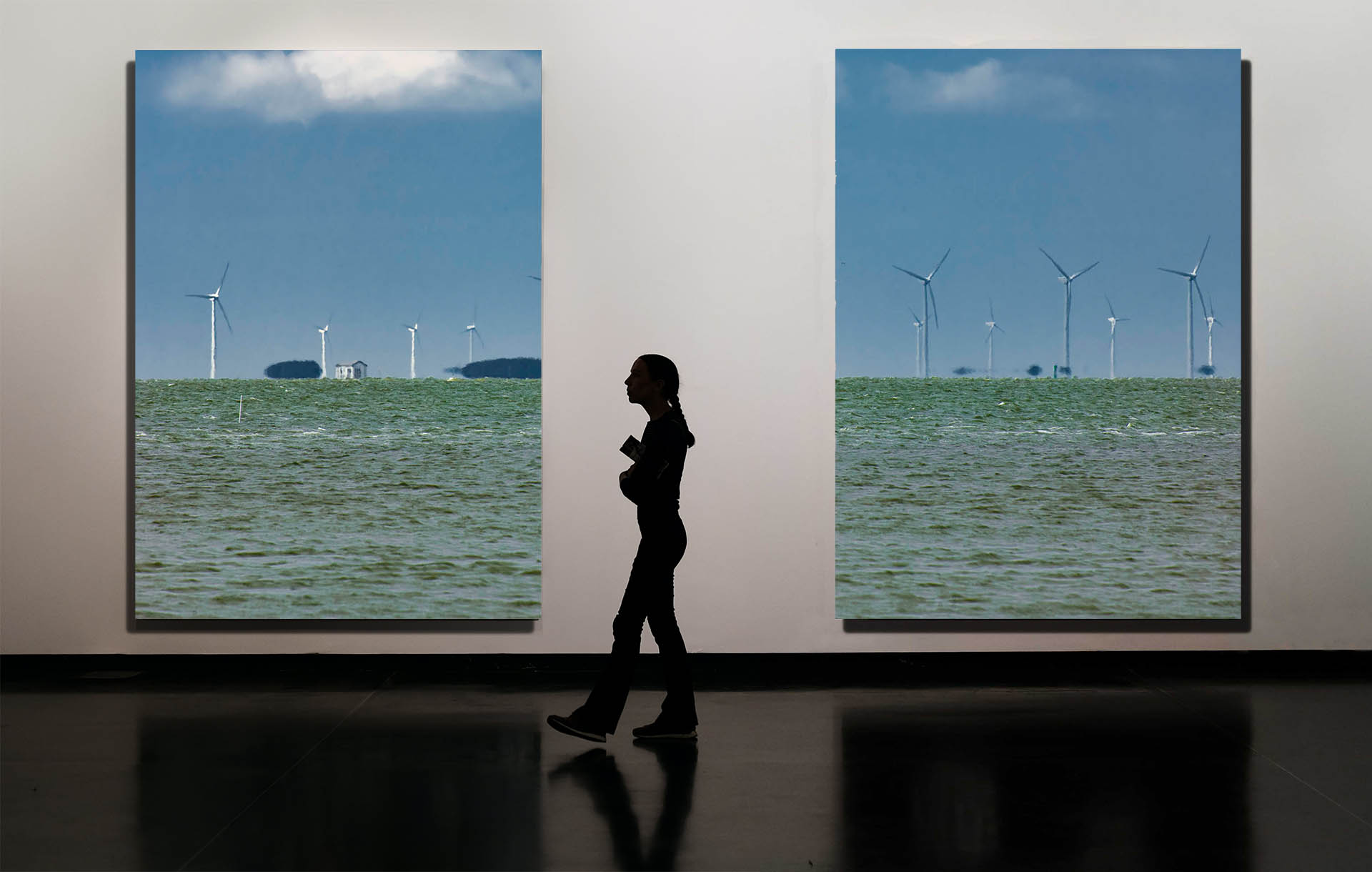
Paper, Longevity, Inks, Float Mount, Metallic,
Lumachrome Acrylic
Longevity – Traditional chemical processing no longer has a greater life expectancy than digital prints. Pigmented inks and high quality archival papers today far outperform traditional darkroom technique. Some say the dots from a digital printer are not comparable to the continuous tone of a chemicals print. This was true in the early days, but it is not what I see with my magnifying glass.
Digital prints are now widely accepted in museums and galleries. With the best papers and chemicals, traditional darkroom color prints last 25 to over 100 years, in very bright indoor conditions to museum archival settings. Digital prints with made with high quality inks and papers, sandwiched between acrylic and Dibond, or with a high quality UV inhibitor, will last longer than anything ever before, well over 100 years and possibly much longer.
Dye vs, Pigmented Inks – Dye-based inks are what we find in our desktop and office printers. They are water based and not waterproof. Until recently though, they had much better gamut or color range than pigment based inks. Pigment based inks are finely ground particles of color suspended in a waterproof carrier. Their color gamut today is as good or better than dye inks and they last 100 to 250 years vs. 100 years or less for dye-based inks. We use photo production houses that only use pigment-based inks.
Paper Prints – These are standard photographic prints on paper. We provide this service so you can use the print as you see fit, mounting it how you prefer. We use Glossy or luster Ilford Galerie paper.
Under Glass – Glass is for traditional mounting with standard, glossy, semi and matte papers. Glass can reduce sharpness and add glare, so we suggest glare-free glass. UV blocking glass can increase the life of prints, especially if exposed to bright outdoor light in a bright room or next to a window. Our rolled unmounted prints are ready for you to have mounted under glass. We do not offer photography under glass.
Float Mounting – This technique gives the illusion the photo is hovering in space a short distance from the wall. It is achieved with a hidden mount and is a very simple way to effectively allow focus only on the photograph.
Metal Prints – These prints are made on aluminum and are the best of the metal world. Thier definition and lluminosity exceed that of metal paper prints and in addition they are extremely durable, and scratch and fingerprnit resitant.
Acrylic Face Mounting – This is the best type of photo mounting available. The strategy applies the face of a glossy print to optically clear acrylic sheet (same as Plexiglass) with an optically clear adhesive. A backing material like Dibond aluminum composite panels or Sintra expanded PVC is mounted to the print/acrylic laminate to protect the back of the print and add rigidity and a platform to mount a frame or float supports. Acrylic mounting not only offers superior image protection, but it brings out detail, enhances colors and contrast, and gives the image a 3D effect that increases with greater thicknesses of acrylic
Trulife Nonglare Acrylic – (link) This the top of the line in acrylic developed by Tru Vue for face mounting and direct printing. It virtually eliminates reflections and glare; is scratch resistant, creates a lifelike 3D appearance, and creates the highest resolution image viewing available.
Lumachrome Acrylic – This process arguably, creates the best photographic prints in the world. It is a proprietary process developed by Robert Park and the Nevada Art Printers. From Nevada Printers, “The Lumachrome process is engineered to overcome and surpass the limitations of traditional Fujiflex chromagenic processes and inkjet processes. Details appear to emerge in 3D from the depths of the image with the Lumachrome process thanks to the transparency layer that is infused with iridium particles and is encapsulated in a layer suspended between the white poly surface and Acrylic.”
CHARACTERISTICS:
• Brilliant Colors Lasting Over 120 Years
• Superior Gamut vs Traditional Fujiflex Prints
• Incredible 3D Depth & Dimensionality
• Unsurpassed Detail & Ability to Hold Highlights
• Superior Shadow Luminosity & Detail
• Radiant Glowing Response Under Halogen Lighting
• Neutral Skin Tone Reproduction
Lighting – Special lighting can often enhance photographs and in the case of Lumachrome’s process infused with iridium particles, the images appear to glow if lit with LED lighting in the proper wavelength. High end LED lighting like Solux ColorView LED Art Light used by many galleries, can take an extraordinary photograph and bring it to life. LIghting with a temperature of 3000K to 4000K is ideal. Place ligths at a 30 degree angle to the photograph, hooded to avoid glare.
https://www.mickeyshannon.com/how-to-light-your-art/
